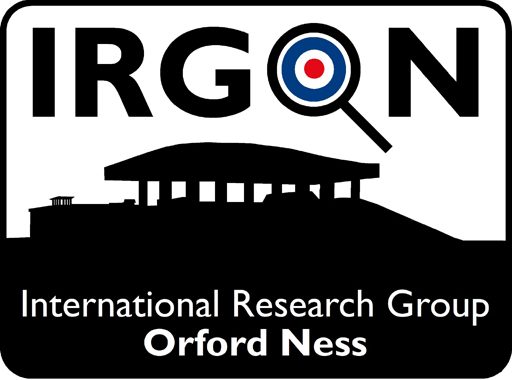
This page is under construction
Orford Ness has been involved in radio direction finding in the inter-war period, (see the IRGON page on the Black Beacon) and the development of radar prior to World War 2. In the Cold War period, IRGON believes that Orford Ness was the location for at least three different over-the-horizon radars (OTHR) systems. These were an AWRE developed system for nuclear detonation (and possibly missile launch) detection which operated in 1960, and a large UK/US system (COBRA MIST) which was installed in the 1970s.
OTHR and ELINT
OTHR stands for Over The Horizon Radar, and ELINT stands for ELectronic INTelligence. The Orford Ness OTHR applications seems to have been mostly ELINT.
Why Orford Ness?
Several factors contributed to the fact that Orford Ness was home to several intelligence gathering radar systems during the Cold War era. These factors were:
- Secure location. As a military research establishment on a shingle spit, Orford Ness has had restricted public access from the beginning, and with the establishment of the AWRE facility a separate secure area was established.
- Geographical situation. Being able to “look out” towards the USSR with an unobstructed path to the sea horizon was a very important factor. 1
- Radio quiet zone. Distant from major population centres, Orford Ness was located in a quiet radio environment. 2
- Ground conductivity. Maintaining a suitable earth potential in relation to the aerial systems is important for sensitive radio and radar installations. Steel mesh earth mats can (and were) installed but high ground conductivity is an important advantage. 1
Besides over-the -horizon radar, there were other radio experiments on Orford Ness. One specific example is the radio tracking of Sputnik I, which was carried out by an AWRE team in 1957. IRGON is researching this, as well as other mysterious aerials which were present on the Ness in the 1950s and 1960s.
IRGON research continues in the field of radio and radar on Orford Ness.
The 1920s radio navigational aid known as the Black Beacon.
The first OTHR system we are aware of on the Ness, used for atomic explosion detection.
The last OTHR system on the Ness, the ill-fated COBRA MIST.
References
1. Memorandum to I. Maddock from S.D. Abercrombie, Superintendent of Electronics Field Experiments, AWRE Aldermaston., reference 621.396.969.106/1, 1st October 1963
2. Echoes and Reflections, Keith Wood, Serendipity Press, 2004, p. 136.
